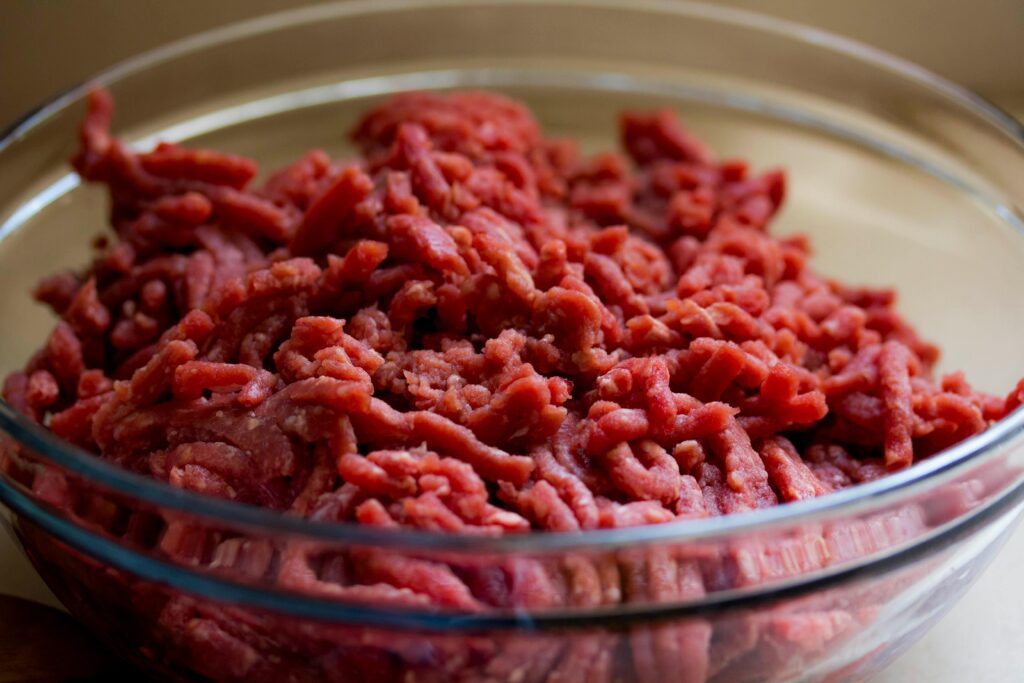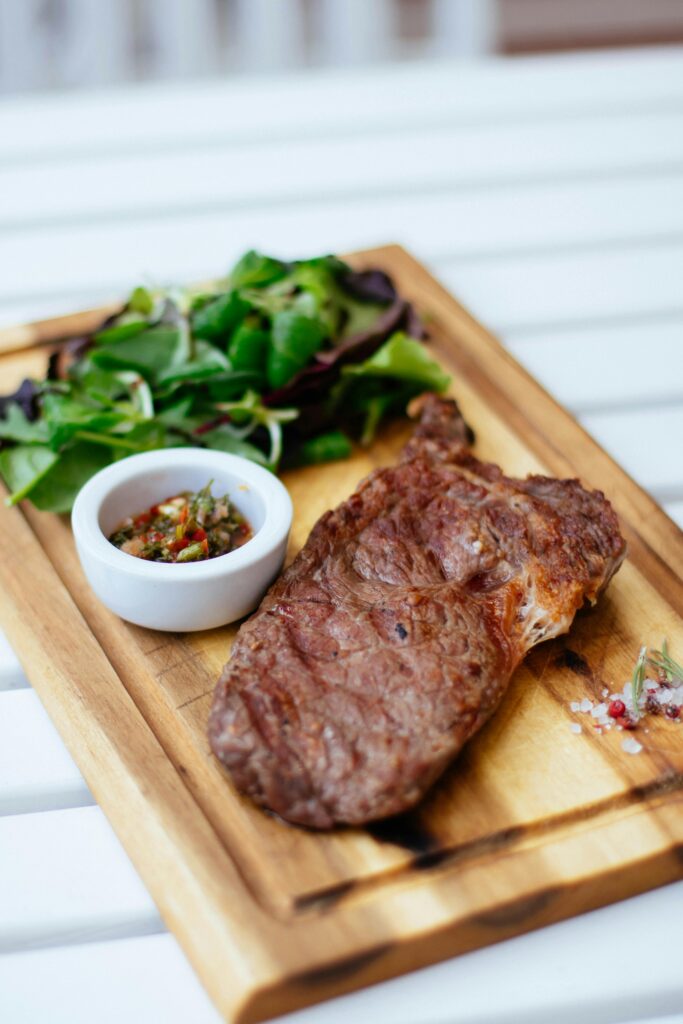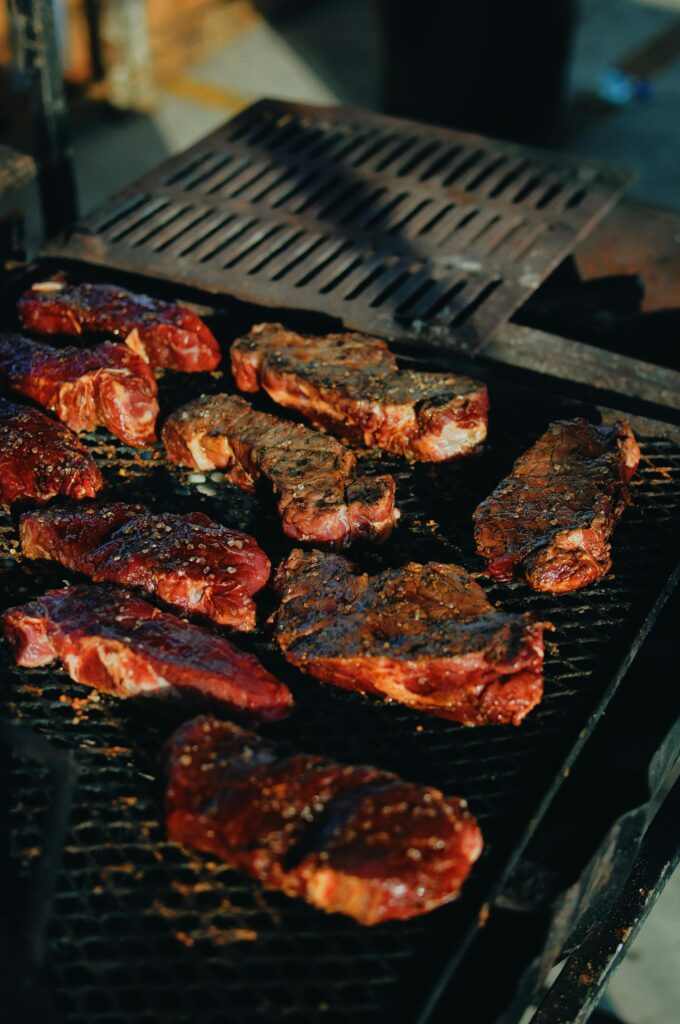People Just Found Out That The Red Liquid In Rare Steak Isn’t Blood
The Misconception of “Blood” in Steak
When one orders a rare steak, it often comes with a vibrant red liquid that many people mistakenly assume is blood. This common misconception has led to a range of reactions, from aversion to intrigue, particularly among those who are unfamiliar with the science of meat. However, the truth is more nuanced and involves an understanding of meat composition, cooking processes, and food science. This article aims to clarify what this red liquid is and why it’s not actually blood.

Understanding the Basics: What is Meat?
Meat is composed primarily of muscle tissue, which contains protein, fat, and water. The primary protein in muscle tissue is myoglobin, which is crucial for oxygen storage in muscle cells. Myoglobin is a globular protein similar to hemoglobin, which is found in blood. However, unlike hemoglobin, myoglobin is not a blood component; it is a muscle pigment that gives meat its color. The more myoglobin present in a particular type of meat, the darker it will appear.
When we talk about rare steak, we typically refer to cuts of beef that have been cooked at lower temperatures, allowing the inside to remain mostly red and warm. During the cooking process, the myoglobin present in the muscle tissue reacts to heat and changes color, shifting from purple to red and eventually brown as the temperature rises.
The Science Behind the Red Liquid
The red liquid observed in a rare steak is primarily a mixture of myoglobin and water, not blood. Myoglobin, when exposed to air, binds with oxygen and takes on a bright red hue. This reaction is what creates the appealing color of rare and medium-rare steaks.
The misconception arises due to the color’s similarity to blood. Blood in animals, including cattle, is primarily contained in the circulatory system and is removed during processing. While some blood may remain in the muscle tissues, the majority of it is drained during slaughtering, rendering the meat blood-free.
In addition to myoglobin, the red liquid also contains other components such as amino acids, small peptides, and minerals that contribute to the flavor and nutritional profile of the meat. The water content in muscle tissue can also cause a pooling of this liquid when a steak is cut or cooked, which can further lead to the misinterpretation that it is blood.

The Cooking Process and Its Effects
Cooking methods significantly impact the color and texture of meat. In rare steak, the internal temperature typically ranges from 120°F to 130°F (49°C to 54°C). At this temperature, the myoglobin remains in its red form, while higher temperatures will denature the protein and alter its color.
As the meat cooks, myoglobin undergoes a transformation. The initial state of myoglobin is purplish-red, which then changes to bright red as it binds with oxygen. If the steak continues to cook, myoglobin denatures further, turning brown due to heat. This transition is often mistakenly associated with overcooking or spoilage when, in fact, it is a normal process that occurs during cooking.
Why Is This Misunderstanding Important?
Understanding that the red liquid in rare steak is not blood can have several implications:
- Culinary Knowledge: For chefs and food enthusiasts, recognizing the importance of myoglobin enhances the appreciation for how cooking techniques affect meat. Knowing that the liquid is harmless can lead to more informed cooking choices.
- Consumer Confidence: Many people avoid ordering rare steak due to misconceptions about food safety and hygiene. Educating consumers can help reduce unnecessary fear and promote a broader acceptance of different cooking styles.
- Nutritional Awareness: The red liquid is often rich in nutrients. Understanding this can encourage people to enjoy meat in various preparations without preconceived notions about its composition.
Debunking Common Myths
- “All Red Liquid is Blood”: As discussed, the red liquid in steak is primarily myoglobin and water. While a small amount of blood may remain, it is negligible compared to the total volume of liquid.
- “Rare Steak is Unsafe to Eat”: Many people assume that because rare steak is not cooked to higher temperatures, it poses a health risk. However, as long as proper food handling and cooking practices are observed, rare steak can be safely consumed. It’s crucial to source high-quality meat and be aware of food safety standards.
- “The Color Indicates Freshness”: While color can sometimes indicate freshness, it’s not always reliable. The red hue of myoglobin can appear vibrant even in meat that is no longer fresh. Factors like smell, texture, and expiration dates should also be considered when assessing meat quality.
The Cultural Context of Steak Consumption
In many cultures, particularly in Western culinary traditions, steak is celebrated as a symbol of indulgence and gourmet dining. The preference for rare or medium-rare steaks reflects a deep appreciation for the flavor and texture that come with less cooking. This is particularly notable in steakhouse culture, where the choice of doneness is a point of pride for many diners.
Steak lovers often debate the merits of various cooking methods and preferences for doneness. While some prefer the charred crust of a well-done steak, others argue that the juiciness and flavor of a rare steak cannot be matched. This culinary discussion further highlights the importance of understanding what contributes to the taste and appearance of different steaks, including the role of myoglobin.

The Nutritional Perspective
From a nutritional standpoint, the red liquid contains several important nutrients. Myoglobin is rich in iron, which is essential for transporting oxygen in the blood. Consuming beef can provide significant amounts of protein, B vitamins, and minerals like zinc and selenium. Understanding that the red liquid is not blood but a nutritious component of the steak can encourage consumers to view it as part of a balanced diet.
Moreover, cooking steak to various degrees of doneness affects its nutritional profile. For example, well-done meat has less fat and retains fewer vitamins than rare meat. Thus, understanding the implications of cooking temperature on nutrition can lead to more informed dietary choices.
The Bottom Line: Embracing Knowledge
As the culinary world continues to evolve, so does the understanding of food science. The realization that the red liquid in rare steak is not blood but rather a combination of myoglobin and water is an important distinction that can enhance the dining experience.
For chefs, home cooks, and diners alike, embracing this knowledge allows for greater appreciation of meat and its preparation. Whether one prefers a beautifully seared steak or a rare cut, understanding the science behind what we eat enriches our culinary experiences and promotes a healthier relationship with food.
In conclusion, the red liquid in rare steak may be misunderstood, but by shedding light on its true nature, we can foster a greater understanding and appreciation for meat, its preparation, and its role in our diets. So, the next time you slice into a juicy rare steak, remember: it’s not blood—it’s myoglobin, and it’s a sign of flavorful, properly cooked meat. Enjoying your steak while understanding what’s on your plate can elevate your dining experience to new heights.


